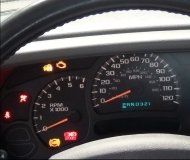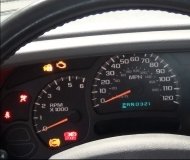Two overlooked items that wound up fixing the vacuum problems causing my vehicle to stall whenever in gear and my foot not on the accelerator: EGR boot and oil filler cap.
The EGR valve boot had 2 issues: 1) the flange on the valve was not seated in the recess of the boot. Once seated properly, the stalling condition became intermittent instead of constant. When I replaced the boot, stalling became rare.
That's when I knew I was onto something. Having gone through every suggestion seen in this post, including checking and replacing everything I assumed was vacuum related, I was overlooking the operational aspect of how that "port" vacuum is created. Most of the vacuum used in an engine comes from the intake side cam housing. Any leak there cannot be overcome at idle when in gear. When you're depressing the accelerator, you often generate vacuum to spare.
With my oil filler cap so easy to remove and put back on I decided to try changing that. If it's a breeze to remove the cap, it isn't sealing.
Stalking became a thing of the past on that vehicle for months. Suddenly the symptoms reappeared in full force. I went back through all of the vacuum system and found that the oil cap, the one I just replaced, was like jelly. The rubber was softening at operating temperature. I replaced the filler cap again. Same part, same brand (Help!), And that was years ago. They must have had a bad batch of rubber with the first cap I bought.
Debug was simple on the EGR and filler cap. With the engine running and warmed up, assisted by someone holding their foot on the brake and putting the vehicle in gear, the idle can be made happy by just pushing the valve or cap down. On the EGR that was true whether it was the valve flange not seated properly in the boot, and in determining the entire boot had gone past its serviceable period.
On my daughter's car, the intake camshaft housing gaskets were leaking. Oil was seeping out, so air (and dirt) was getting in. The air getting in was causing vacuum pressure to drop enough that her car intermittently stalled in gear when warmed up, with the foot off the accelerator. The constant symptom was a grumbling engine. It just sounded like it didn't want to be bothered.
Vacuum leaks entail more than just vacuum lines and fittings.
Rubber does the opposite of almost every other material when temperature variations occur it shrinks when hot and expands when cold. This is why the symbiotic relationship between rubber and metal creates such a great seal.
One more stalling issue under the same operating conditions came about on my Chevy. The seal on the vacuum dump tube to the exhaust cam cover, another rubber boot similar to the EGR valve boot (including the flange seat) was old and tired too. I could not find a replacement. The inner diameter was smaller than the EGR boot, but otherwise identical. To fix the exhaust vacuum leak I had to resort to adding a layer of heat shrink tubing to the vacuum dump tube and two layers of heat shrink tubing to the outer surface of the boot. I don't like it, but it works. How that dump tube works I imagine is to maintain vacuum when none of the intake valves are open.
None of those issues were what I expected to include when inspecting for vacuum leaks. Add them to your checklist and you might save yourself a lot of time, money, aggravation and the failures that come with trial and error.
Thursday, May 26th, 2022 AT 8:13 AM




